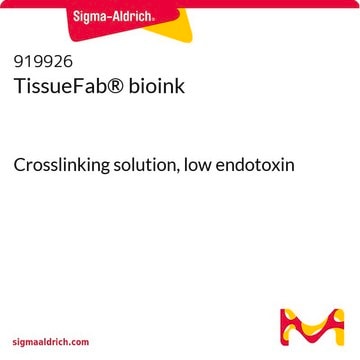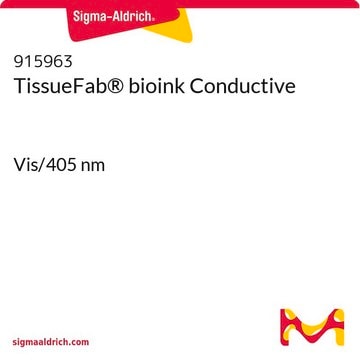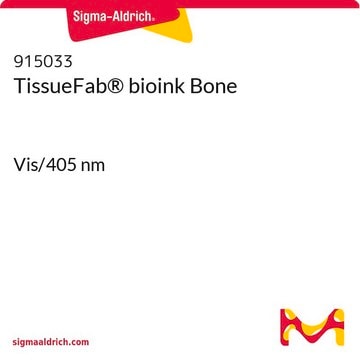Yes, any of GelMA based bioinks, such as 918741, can be used for DLP 3D printing, but some adjustments are needed. The DLP printer should have a heating function, or the bioink needs to be heated before printing to make the GelMA a low viscosity liquid. Additionally, a photo-absorber needs to be added to the bioink to scavenge scattered light.
추천 제품
Quality Level
설명
suitable for 3D bioprinting applications
with LAP photoinitiator
무균
sterile-filtered
양식
viscous liquid
불순물
≤5 CFU/g Bioburden (Fungal)
≤5 CFU/g Bioburden (Total Aerobic)
<50 EU/mL Endotoxin
색상
colorless to pale yellow
입자 크기
0.2 μm
pH
6.5-7.5
응용 분야
3D bioprinting
저장 온도
2-8°C
유사한 제품을 찾으십니까? 방문 제품 비교 안내
애플리케이션
Gelatin methacryloyl (GelMA) is a polymerizable hydrogel material derived from natural extracellular matrix (ECM) components. Due to its low cost, abundance, and retention of natural cell binding motifs, gelatin has become a highly sought material for tissue engineering applications. The addition of photocrosslinkable methacrylamide functional groups in GelMA allows the synthesis of biocompatible, biodegradable, and non-immunogenic hydrogels that are stable in biologically relevant conditions and promote cell adhesion, spreading, and proliferation.
법적 정보
Storage Class Code
10 - Combustible liquids
WGK
WGK 3
가장 최신 버전 중 하나를 선택하세요:
문서
약물 검사, 질병 모델링, 체외 장기 이식을 위해 바이오잉크를 기능성 조직 구조체로 3D 바이오프린팅할 수 있습니다. 특정 조직 공학 응용분야에 맞는 바이오잉크 및 분석법을 선택하십시오.
Bioinks enable 3D bioprinting of tissue constructs for drug screening and transplantation; select suitable bioinks for specific tissue engineering.
Learn how 3D bioprinting is revolutionizing drug discovery with highly-controllable cell co-culture, printable biomaterials, and its potential to simulate tissues and organs. This review paper also compares 3D bioprinting to other advanced biomimetic techniques such as organoids and organ chips.
활성 필터
자사의 과학자팀은 생명 과학, 재료 과학, 화학 합성, 크로마토그래피, 분석 및 기타 많은 영역을 포함한 모든 과학 분야에 경험이 있습니다..
고객지원팀으로 연락바랍니다.








